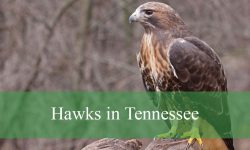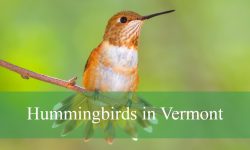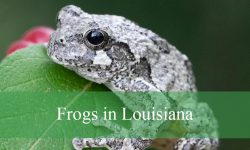Eagles are among the most awe-inspiring birds to observe in New York. Their soaring flights, sharp eyes, and commanding presence make them a highlight for birdwatchers exploring rivers, lakes, and mountainous regions.
While Bald Eagles are the most frequently seen, Golden Eagles and other rare visitors occasionally appear in remote areas. Each species has unique markings and behaviors, offering birders the thrill of spotting and identifying them in the wild.
From the Hudson River valleys to the Adirondack peaks, New York’s diverse landscapes provide excellent opportunities to witness these magnificent raptors in action. With patience and careful observation, every outing can yield unforgettable eagle encounters.
Different Types of Eagles Found in New York
Bald Eagle (Haliaeetus leucocephalus)
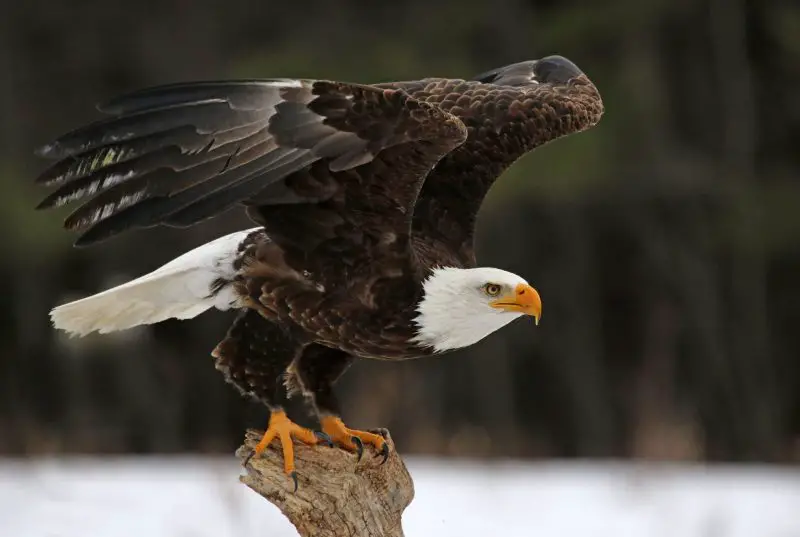
The Bald Eagle is the most iconic and widely recognized eagle in New York, symbolizing strength and freedom across the United States. Adult Bald Eagles have a striking white head and tail, which contrast sharply with a dark brown body and broad wings. Juveniles display a mottled brown and white plumage, gradually transforming into adult coloring over approximately five years. Their large, hooked yellow beak and piercing eyes make them formidable predators.
These eagles are known for their impressive size, with a wingspan that can reach up to 7.5 feet (2.3 meters). This large wingspan allows them to soar effortlessly over rivers, lakes, and forests while scanning for prey. Their powerful legs and talons are perfectly adapted to grasp fish and other small animals, making them highly efficient hunters.
Bald Eagles primarily feed on fish, swooping down over water to catch their prey with precision. They are also opportunistic feeders, hunting small mammals and waterfowl or scavenging carrion, particularly in winter when fish are less accessible. Their keen eyesight enables them to detect prey from great distances, and they often perch patiently along shorelines or soar high above open water.
In New York, Bald Eagles are commonly found near the Great Lakes, along the Hudson River, and throughout the Adirondack and Catskill regions. They prefer habitats with large trees or cliffs near water, which provide excellent vantage points for hunting and nesting.
Bald Eagles build impressively large nests called eyries, which they often reuse and expand year after year. These nests, usually placed in tall trees like white pines or on cliff ledges, can reach up to 10 feet (3 meters) in diameter and weigh several hundred pounds. They are most active during early morning and late afternoon, and winter often brings large gatherings near unfrozen rivers, making New York a prime location for eagle-watching.
Golden Eagle (Aquila chrysaetos)

The Golden Eagle is much rarer in New York, often spotted only in remote and mountainous regions. Sightings are most frequent in the Adirondacks and parts of the Tug Hill Plateau. Adults are striking, with dark brown plumage complemented by golden-buff feathers on the back of the head and neck. Juveniles are easier to identify by white patches at the base of the tail and wings, which fade as they mature over several years.
Golden Eagles are among the most powerful birds of prey in North America. They have large, broad wings and strong talons, allowing them to hunt agile mammals with precision. Their keen eyesight lets them spot prey from high altitudes, and they often soar for hours, scanning vast territories for food.
Their diet mainly consists of rabbits, squirrels, and other small to medium-sized mammals. On occasion, they may take larger prey such as foxes or even young deer if the opportunity arises. Like Bald Eagles, Golden Eagles are opportunistic, adjusting their hunting strategies depending on prey availability and seasonal conditions.
In New York, Golden Eagles prefer open and rugged habitats, such as cliffs, ridges, and tundra-like regions. These areas provide excellent vantage points for hunting and minimal disturbance from humans. Because suitable habitats are limited, Golden Eagles are much less commonly seen compared to Bald Eagles.
Golden Eagles are solitary or found in pairs, often nesting on cliffs or steep, inaccessible slopes. Their nests are large platforms made of sticks and lined with softer materials. Observing them requires patience and careful planning, as these eagles are highly territorial and sensitive to human presence.
Northern Harpy Eagle (Harpia harpyja) – Rare/Occasional
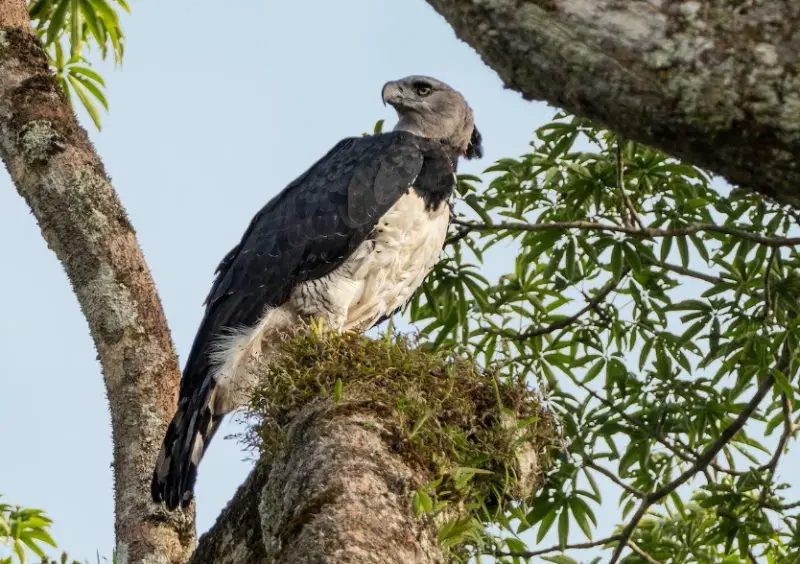
The Northern Harpy Eagle is native to Central and South America and is one of the largest and most powerful eagles in the world. While it is not a regular resident of New York, occasional vagrant sightings have been reported in the United States, making any local appearance extremely rare. Adult Harpy Eagles are easily recognized by their striking black-and-white plumage and prominent feathered crests above their eyes.
This eagle species is remarkable for its size and strength. Adults can have a wingspan of up to 7 feet (2.1 meters) and weigh between 13 and 20 pounds (6–9 kilograms). Their massive talons, among the largest of any eagle, are capable of capturing sizable mammals such as monkeys and sloths in their native range. The strong, hooked beak and muscular legs make them formidable predators.
Harpy Eagles are specialized hunters, using stealth and power to ambush prey from the canopy of dense forests. They rely on exceptional eyesight to detect movement among thick foliage and can maneuver skillfully through trees to seize prey. Despite their prowess, their hunting opportunities are highly dependent on the availability of large prey, which limits their movement outside tropical habitats.
In New York, sightings are exceedingly rare and mostly involve young or disoriented individuals that have wandered far from their native Central and South American ranges. Observing a Harpy Eagle in the wild within the state is considered almost impossible, and any confirmed record is usually treated with significant scientific interest.
These eagles are solitary by nature and maintain large territories in their native habitats. Nests are massive, constructed high in the rainforest canopy, and reused for years. Though New York provides none of their usual ecological requirements, Harpy Eagles continue to fascinate bird enthusiasts and researchers alike for their size, power, and striking appearance.
Other Eagles (Historical or Rare Visitors)
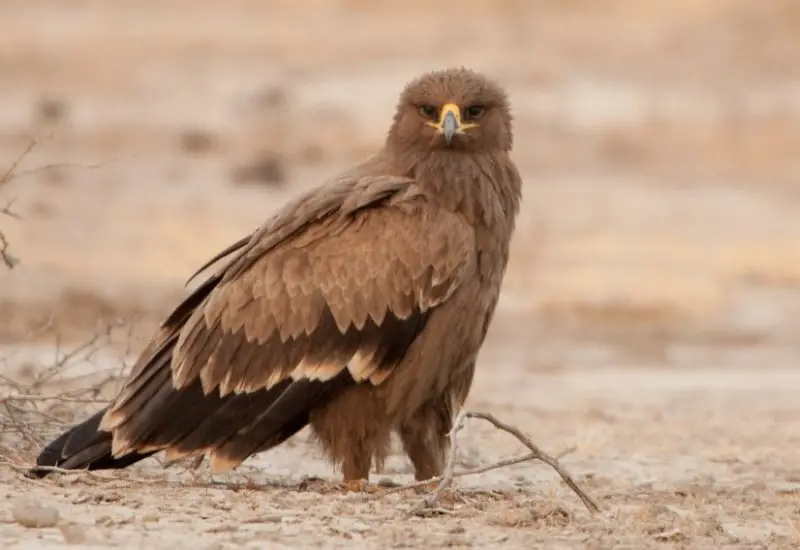
New York occasionally hosts rare or vagrant eagles that are not regular residents. Species such as the Steppe Eagle (Aquila nipalensis) or juvenile eagles from other populations may appear, especially during migration seasons. These sightings are sporadic and usually attract significant attention from birdwatchers due to their rarity.
Steppe Eagles are medium to large raptors with dark brown plumage and lighter golden tones on the head and neck, somewhat resembling Golden Eagles. Juvenile vagrants from other species may display varied plumage patterns that differ from typical adults, making identification both challenging and exciting for observers.
These eagles generally pass through New York without establishing territories. They are often seen soaring at high altitudes over open landscapes, using thermal currents to travel long distances with minimal effort. Such individuals are usually solitary and may only remain in the area for a few days or weeks.
Because sightings are so rare, knowledge about these visitors’ behaviors in New York is limited. Birders and researchers often document each encounter carefully, noting location, flight patterns, and distinguishing markings to help verify the species. Photographs and field notes play a crucial role in confirming these uncommon arrivals.
While they do not have a significant ecological presence in the state, the occasional appearance of these eagles adds an element of excitement and wonder for local bird enthusiasts. Observing one of these rare visitors is considered a special event, highlighting the dynamic and sometimes unpredictable nature of New York’s raptor populations.
Best Time and Places to Spot Eagles in New York
Observing eagles in New York is an exciting experience, but knowing when and where to look greatly improves your chances. Bald Eagles are the most commonly seen species, especially during late fall and winter when frozen lakes and rivers concentrate fish, making hunting easier. Early mornings and late afternoons are prime times for spotting them soaring or perched along shorelines.
The Adirondacks, Catskills, and Hudson River corridor offer some of the best eagle-watching locations. The shores of Lake Ontario and Lake Champlain also attract large numbers of Bald Eagles during winter months. Look for tall trees or cliff edges near open water, as these are common nesting and hunting sites.
Golden Eagles are much rarer, but sightings are possible in the Adirondacks and the Tug Hill Plateau. They favor remote ridges and open, rugged terrain, so hikers and wildlife enthusiasts exploring these areas in spring and early fall may have the best chance of encountering them.
Northern Harpy Eagles and other rare visitors are highly unpredictable in New York. Any sighting is usually accidental and may occur during migration or dispersal events. Birders are advised to stay alert in areas with open skies or along migratory corridors, and to report unusual sightings to local birding networks for confirmation.
Planning visits during clear, calm weather enhances visibility, as eagles are easier to spot when soaring against a bright sky. Binoculars or spotting scopes are recommended for detailed observation, and maintaining a respectful distance ensures that the birds are not disturbed.
FAQs About Eagles in New York
What is the most common eagle in New York?
The Bald Eagle is by far the most commonly seen eagle in New York, with populations concentrated along rivers, lakes, and the Adirondacks.
Can Golden Eagles be regularly observed in New York?
No, Golden Eagles are rare in New York. They are mostly found in remote mountainous regions like the Adirondacks and Tug Hill Plateau, and sightings are uncommon.
Are Northern Harpy Eagles native to New York?
No, Northern Harpy Eagles are native to Central and South America. Any appearance in New York is considered extremely rare and accidental.
When is the best time to watch Bald Eagles in New York?
Late fall through winter is ideal, particularly in the mornings and late afternoons when eagles hunt along rivers and lakes.
Where should I go to increase my chances of seeing an eagle in New York?
Prime locations include the Hudson River corridor, Adirondacks, Catskills, Lake Ontario, and Lake Champlain, especially near large trees, cliffs, or open water where eagles hunt and nest.

